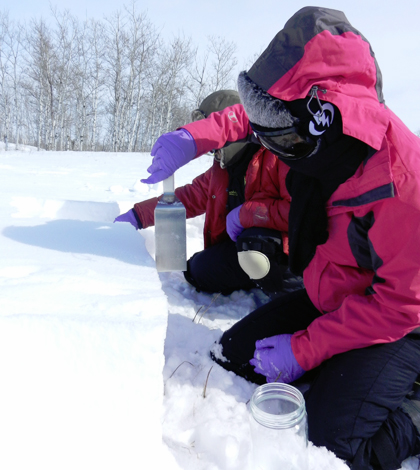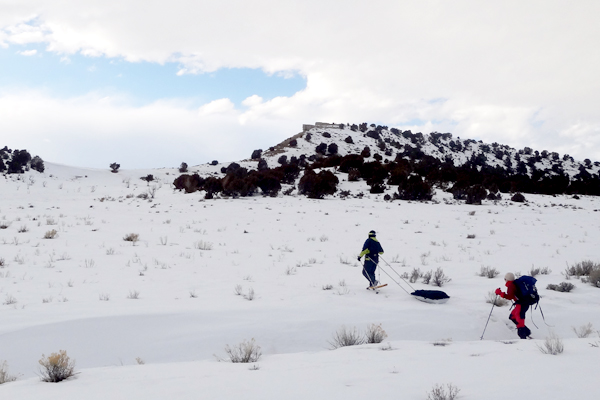Large-scale survey of impurities in N. American snow to help climate modelers

Climate models still have a lot of questions left to answer. Dynamics of the ocean, as well as the role forests play in sequestering carbon are just a few. But one that may not be so obvious is the role that snow color plays.
Beginning in winter 2013, scientists at the University of Washington made a trek through the Canadian wilderness collecting snow samples in the first leg of an expedition that would span into some of the United States’ most remote plains regions. The samples they collected were analyzed to find how much dirt, soot and black carbon was settling on the snow. Their findings will be important to answering questions long posed by modelers.
The trip felt like a long one, say scientists involved in the work. Most of their time was spent traveling back and forth in a truck, and they were living in hotels for weeks on end. After long days of sampling, they would make their way back to hotel rooms to process what they collected.
“It’s sort of 24/7 work. You don’t really have a day off. It’s tiring fieldwork,” said Sarah Doherty, the study’s lead author and a research scientist at the UW’s Joint Institute for the Study of the Atmosphere and Ocean. “Of course we did it in the winter, so there was a lot of snow. We put the truck in a ditch once and it got down to negative 30 degrees (Fahrenheit) in Northern Canada.”
That sort of bone-chilling cold can really slow down sampling, says Doherty, but getting the measurements had to be done.

Scientists studied undisturbed snow away from roads and cities, which meant it was sometimes necessary to tow equipment to sampling sites in sleds. (Credit: C. Dang / UW)
“What we do is take snow, and keep it frozen until we get back to the hotel,” said Doherty. “Then we melt it and run the water through a filter to save the samples.” Those filters were then shipped back to Doherty’s lab where they would be exposed to light to judge how much they illuminated. Researchers then recorded the amount of light each sample absorbed, how much each sample lost and any color reflected back.
Dirt, says Doherty, will darken snow just like soot, black carbon, or other organics. So researchers didn’t limit their scope by looking at just black carbon, which has garnered a lot of focus from climate scientists. She and others also studied soil in the snow and separated out which chemicals, using tracing agents, were in the snowpack and affected its light absorption.
But where do all the dirty particles come from? For many who live in the North Dakota section of the study, it would seem like an easy call.
“In that area there are wells all over the place so people think a lot of the black carbon comes from the oil fields,” said Doherty. “But it’s probably from the general increase in activity that comes with it that increases emissions: all the vehicle traffic, driving on dirt roads, clearing oil pads.” Farming is another contributor, chipping in plenty of soil as agricultural fields are tilled or disturbed in ways that allow for planting and harvesting.
Believe it or not, those are new considerations for climate modelers who up until now have had no insight into regional dust sources. Doherty says data from the study will add new insights to those models, as well as be helpful in vetting their accuracy.
“What they have in the models accounts for (Saharan) desert dust,” said Doherty. “But they don’t have local sources, on the scale of tens of meters. In order for the climate models to get (snow) color correct, they have to include that process. Once we account for those things, then we can start looking at their implications.”
Top image: Researchers use a spatula to collect snow at a sampling site in North Dakota. (Credit: S. Warren / UW)





0 comments